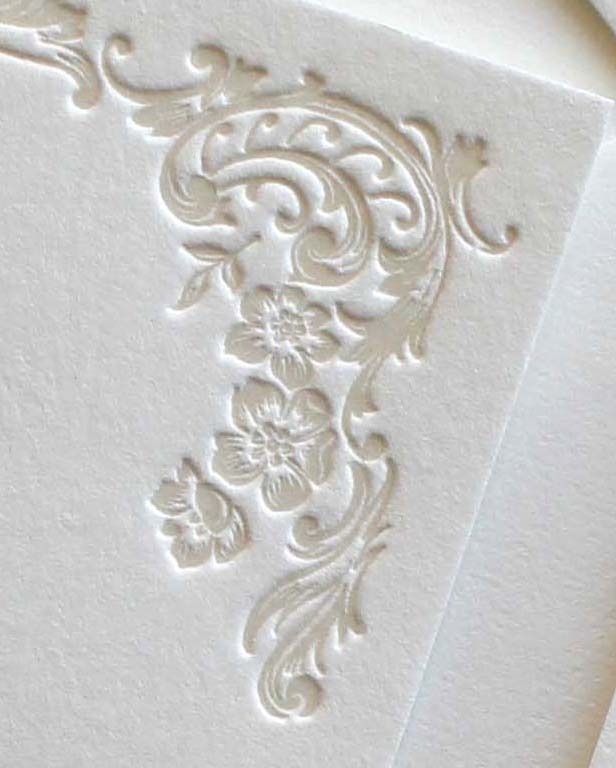What is letterpress printing? This is a question I get asked a lot. Many people want to know exactly how this process works and what is involved.
Let’s first learn about the history of this art form. Letterpress printing was started in the mid-fifteenth century by a German goldsmith named Johannes Gutenberg. In 1439, his invention of moveable type started the Printing Revolution. This allowed for mass communication in Renaissance Europe. Before this, book production in Europe was a handwritten manuscript. In 1455, Gutenberg printed one of his most famous works — 180 copies of his 42-line bible known as the Gutenberg Bible. At the time, a copy of this bible could be obtained by the wages an average clerk would earn over the course of three years. Today, 48 copies are known to have survived, two of which are housed in the British Library. The pages of both the paper and vellum scripts can be viewed here.
The process itself is very laborious. Setting the type for each page may have taken half a day and Gutenbergs shop is thought to have employed 25 craftsmen to help in this task. Today, Johannes Gutenberg is considered one of the most influential people in human history and Time-Life magazine regards his invention as the most important of the second millennium. Moveable type is where letters and type forms were cast or hand carved and then set by hand onto a frame or “chase”. The “chase” is then locked into the bed of the printing press. The type forms are inked and paper is sandwiched between the bed holding the text and the “platen” above. In Gutenberg’s time, this flat plate known as the “platen” was wood. Today, it is made of metal. The pressure applied when closing the press, produces a relief print onto the page. Essentially, the ink is pressed down into the paper producing a tactile, deboss which can be seen and felt. The finished print is very much prized because of its beautiful definition of type and artwork.
Currently, a very small amount of these letterpresses remain. With the ease and popularity of “offset” or flat printing in the 20th century, many of these presses were left by the wayside. Presses that are found, need to be lovingly restored by expert craftsman. We are fortunate to now be able to use these select vintage presses for upscale stationery items and wedding invitation suites. Lovers of the “craft” appreciate that papers often need to be fed into the printing press — by hand, one at a time. Unlike, “offset” printing, which can produce multiple colors at once, letterpress can only print one color at a time. The process requires a great amount of skill and high degree of craftsmanship by the press operator.
The visual beauty and texture of this printing process has spurred a rise in high-end ephemera such as wedding invitations and greeting cards. Many couples and collectors value the finish and quality of letterpress — something that can not often be found in more modern techniques. These precious items hark back to a bygone era.
Please enjoy this beautiful video from Neenah Paper showing the process in a large print shop. I hope you like it. http://vimeo.com/62635922
